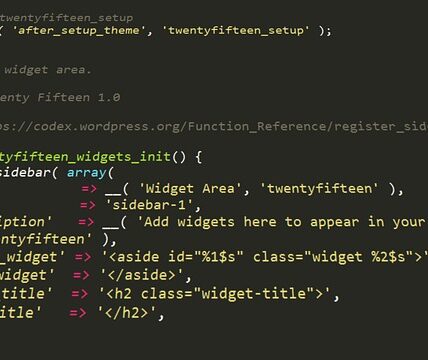Should developers give up ReactJS in favor of other libraries? Can ReactJS really be out competed? Is there an alternative capable of providing a similar set of features? These three questions are constantly at the forefront of the front-end development world and this article attempts to answer them.
The surge in front-end technologies in the last few years has made it difficult to determine the best library to use, and this debate has long been debated in the development community. ReactJS offers a whole set of features that sets it apart from the competition. However, many developers can’t help but wonder if there are other libraries that could offer an equivalent level of functionality. The challenge then lies in finding an alternative library that can match the performance and stability of ReactJS.
In this article, You will learn about several potential libraries that could replace ReactJS in some applications. You will also get an overview of each library’s features, as well as its performance and reliability compared to ReactJS. Finally, you’ll see examples of how each library compares to ReactJS in various aspects of front-end web development.
Whether you’re a ReactJS newcomer or just seeking alternatives to ReactJS, this article will provide you with insight into the front-end library ecosystem and the options available to you. The article will delve into the details of various libraries, enabling you to make an informed decision when it comes to selecting the correct library for your web development needs.
Definitions of React and Other Libraries
ReactJS is a JavaScript library that is used to create user interface components. ReactJS is open source and is maintained by Facebook. It is also used by many large organizations such as Netflix and Yahoo. ReactJS is used to develop a high-performance user interface with ease.
AngularJS is another powerful JavaScript library. It is a complete Model-View-Controller framework. AngularJS was released in 2009, and it is maintained by Google. It is used in many web applications, and it is considered to be one of the most popular JavaScript libraries.
Ember.js is a JavaScript library for creating single page web applications and rich user interfaces. It is an open source project maintained by the Ember Core Team and a community of contributors. Ember.js makes it easy to create web applications that are fast and responsive.
Vue.js is a popular open source JavaScript library for building modern, interactive web applications. Vue is easy to learn and use, and it offers an intuitive and modern approach to building applications. It is easy to integrate into existing projects, and it can be used with any other web development framework.
Backbone.js is a lightweight JavaScript library used for developing structured web applications. Backbone is based on the Model-View-Controller (MVC) design pattern, and it provides an easy way to manage data and create interactive user interfaces. It is useful for complex applications that require a lot of structure and organization.
Each of the libraries mentioned has its own strengths and weaknesses. No single library can beat ReactJS, but when combined with other libraries, they can produce very powerful user interfaces. Every library presents different challenges and requires different approaches, so it is important to choose the right tool for the job.
Angular
Angular – A Comprehensive Guide
What is Angular?
Angular is an acutely widely used JavaScript-based open-source framework. It is developed and maintained by Google. It is used by developers for building fast and highly efficient mobile and desktop applications. It is a popular front-end framework integrated with powerful features. It follows an MVC model and simplifies the development process by providing an impressive server-side rendering.
Angular’s Popularity
Angular has been rapidly evolving with its latest version i.e. Angular 8.0 and has been one of the most popular and powerful frontend development frameworks. It is used by some big brands such as Microsoft, Google, and Wix. Some of its popular features like support for TypeScript, simplified MVC architecture, two-way data binding, and module separation allows the developers to quickly develop dynamic web apps. The latest version of Angular also has a powerful CLI tool which automates various development tasks.
Angular can be used for developing high-performance apps. It is suitable for building both desktop and mobile apps. It offers different components and libraries that can be used for development which makes the process much easier and faster. The framework also provides features such as HTML-templates, dependency injection, and form validation which make the development process much more efficient.
Apart from these features, Angular also offers several benefits such as scalability, convenience, code reusability, and better performance which makes it the most sought-after framework for web developers.
Angular’s Pros
- It provides fast development of highly efficient mobile and desktop applications.
- It is suitable for developing both basic and complex web applications.
- It has an easy deployment process.
- It is easy to learn and use.
- It offers powerful features such as two-way data binding.
- It is compatible with third-party libraries.
- It supports a large community for problem solving.
Conclusion
In conclusion, Angular is a powerful frontend development framework and is considered the most effective framework for building high-performance mobile and web applications. It has powerful features and offers various benefits which have made it a popular choice among developers.
Vue
Comparing ReactJS and Vue
Comparing Interfaces
ReactJS is a well-known JavaScript library created by Facebook used in building user interfaces. It uses components for building user interfaces and follows the concept of “learn once, write everywhere.” On the other hand, Vue is also a well-known JavaScript library created by Evan You, an ex-Google employee, and heavily inspired by ReactJS and AngularJS. It is a more expressive and light-weighted library with thin interface and simple API. Compared to React, Vue has easier learning curve with easier componentization and less coding. Vue also provides tools and libraries which React does not, such as reactivity with detailed states, and routing strategies which makes development easier than React.
Comparing Performance
React is known for its great performance even on complex user interfaces. It has exceptional upward scalability which makes it suitable for large and complicated projects. On the other hand, Vue also offers a great performance on simpler user interfaces. Vue is a better improvement from AngularJS, providing better performance and smoother transition of feature-rich user interfaces. Although Vue does not provide as great performance as React, it is still a great library because of its smaller size and more organized structure. Additionally, both React and Vue have their own debugging tools and browser extensions, which makes debugging easier.
Overall, both ReactJS and Vue are great libraries and have their pros and cons when it comes to user interfaces and performance. ReactJS offers better performance on complex user interfaces while Vue offers advantages in features, structure and size. Depending on the project, one library may be better than the other. Therefore, it is important to research the two libraries carefully before making any decision.
Svelte
Svelte is a modern JavaScript framework for developing web applications without writing complex code. It offers a fast and easy way to add interactivity to websites and applications, making it an increasingly popular choice for developers. Unlike some other frameworks, Svelte does not require extensive prior knowledge or large libraries of resources to get started. This makes it an ideal choice for those just getting started in developing interactive web applications, as well as those who are looking for a more efficient workflow.
Why Choose Svelte?
Svelte stands apart from other JavaScript frameworks due to its unique compile-time approach. Rather than requiring developers to compile their code at runtime, Svelte compiles the code at build time, resulting in smaller bundles and faster application loading times. This makes Svelte a powerful and efficient choice for users who want to build and run interactive applications quickly.
In addition to its efficiency, Svelte also offers a number of features that make it ideal for developing advanced web applications. It supports natively React’s components, allowing developers to easily reuse code. It also supports reactive programming, which allows developers to respond to user input quickly and seamlessly.
Adding To Svelte
Compared to other JavaScript frameworks like ReactJS, Svelte is designed to be flexible and extensible. Its minimalist core allows developers to easily add components and capabilities like animations, data loading, state management, and more. As a result, developers can easily add advanced features to their applications without having to rewrite existing code.
Overall, Svelte is a powerful, efficient, and flexible framework for developing modern web applications. Its lack of dependencies, small bundles, and fast-loading applications make it an ideal choice for those looking to create interactive applications quickly and easily.
Conclusion
Which JavaScript library rivals the awesome functionalities of ReactJS? This thought-provoking question is no doubt, one that is posed by many developers when it comes to the current best front-end Javascript library available. While a number of libraries have the capability to provide the same standout features as ReactJS, which one should be chosen as the optimal solution?
With the market changing on an almost weekly basis, it is hard to keep up with the latest developments. This is where this blog comes in and offers you practical solutions and advice towards staying up to date with the tasking and ever-changing world of the front-end Javascript library. If you’re interested, make sure to follow us and find out what’s new each week.
FAQs
Which Front-End Javascript Library Is the Best?
The best front-end Javascript library will depend on the type of development you plan to undertake, but ReactJS is an excellent starter option. It provides an array of key features that make it incredibly popular among developers.
Are There Any Alternatives to ReactJS?
Yes, there are a few alternatives to ReactJS and each offer different advantages. Vue.js is one such library which offers a much simpler syntax when compared to React. Another option is Ember.js which boasts its own array of impressive features and developers tools.
What are the Benefits to Adopting ReactJS?
ReactJS offers many benefits such as improved UI design capabilities, small library size, a higher development speed with the help of its serverside renderings, and plenty more. Making ReactJS the go-to choice for web and mobile development projects.
How Can I Easily Test and Compare the Alternatives?
One of the key ways to easily test and compare the different ReactJS alternatives is to generate a few basic projects with them and test out their functionality. This is a great way to btter understand the advantages of each.
How Often Are the Different Alternatives Updated?
Each of the ReactJS alternatives is expected to receive updates on a regular basis. Allowing for smoother development and more advanced functionalities. It’s important to check the release notes for new updates and more information.




